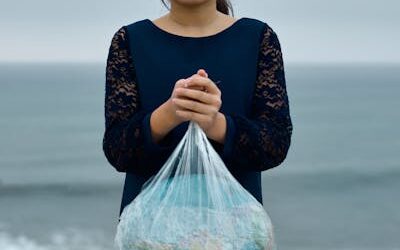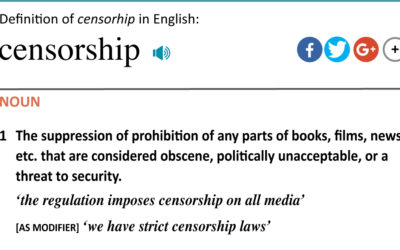Highlights
- Sewage dumped into the ocean harms sea life
- Sewage sludge converted to fertilizer has too many harmful chemicals in it
- Food waste and sewage sludge can be turned into valuable fuel, but toxic chemicals (e.g., glyphosate, prescription drugs) are still problematic
- Acid-loving microbes from Yellowstone Park produce versatile enzymes capable of breaking down toxic chemicals
- Hydrogen gas can be extracted during processing and combined with nitrogen from the air to produce ammonia, a convenient storage form of hydrogen gas
- Electric vehicles fueled by hydrogen gas are fast becoming a practical reality
Brett Danson is an entrepreneur who lives in Kauai, Hawaii, and his life passion has become seeking ways to improve the environment in order to safeguard human health and the health of the ecosystem. His fascinating life story reveals how adversity can lead to a new focus of life energy, ultimately resulting in both personal and financial success, and even great achievement.
Brett’s life-changing moment took place on a day in 2010 when he was innocently walking his dog along a street on the west side of Kauai, when a pick-up truck drove by with men in the back, dressed in hazmat suits spraying weed killer along a 2-mile long seawall. Even though Brett and his dog were across the street, the foul smell of the herbicide permeated. The sprayers were paying no attention to the man with his dog. While Brett was watching them, the dog soon passed out, and Brett tripped over the dog just as it collapsed to the ground. Shortly thereafter, both Brett and his dog became sick. Through some investigations, Brett found out that the chemical was a mixture of glyphosate and 2,4-D, which had been incorrectly formulated at double the specified concentration in the instruction manual.
That was bad. But there was more — a much darker secret. Nearly all the homes on the west side of Kauai have cesspools. Cesspools are simply open holes in the ground where sewage from the home or businesses collects. Cesspools leak into the ocean throughout Hawaii and many other parts of the world. It’s a worldwide problem causing millions of deaths and illnesses every year. Sewage is a problem and food waste is a problem, worldwide. Sewage and food waste unchecked create unsanitary conditions that damage the entire ecosystem.
Brett’s condition continued to deteriorate, and he was eventually diagnosed with severe chronic obstructive pulmonary disorder (COPD). His doctor gave him a very discouraging prognosis, recommending that he “get his life in order” and prepare to die.
Instead, Brett got on the Web and started researching any information he could find on how to heal from COPD. He eventually settled on several natural supplements that he took in high doses, including essential oils such as red thyme, quercetin and N-acetyl cysteine. It took several years, but finally he was able to fully heal.
Brett’s experience had a lasting effect on his perspective on life. He decided to set up a nonprofit foundation which he called the “Global Environmental Legacy Foundation,” whose main focus initially was to try to figure out how to use advanced sciences to remove pathogens and chemicals like glyphosate from water supplies. In 2015, the foundation created a short video [1] describing an idea involving magnetic nanoparticles using a method called capacitive deionization.
Brett is a natural-born leader, and he is not shy about reaching out to experts to share his novel ideas and to expand his knowledge domain. One by one, he slowly grew a network of like-minded individuals, all broadly interested in the topic of turning waste into useful products, while detoxifying water. He also became mindful of the fact that human waste and food waste, if not properly managed, not only causes severe illness and death but can contribute to the carbon footprint that is affecting climate change, through the release of greenhouse gases such as methane, carbon dioxide and nitrogen oxides.
Unfortunately, today, because of the chemical age that we live in, both sewage and food waste are contaminated with many toxic chemicals, such as glyphosate and polychlorinated bisphenols (the forever chemicals), but also toxic metals and many unmetabolized prescription drugs present in human waste. Handling waste is a much more difficult and challenging problem than it was back in the day before all these synthetic chemicals had been invented.
For example, many of the drugs used in chemotherapy to treat cancer are not metabolized by the patient and can end up in the waterways. A good example is methotrexate, which is used to treat not only cancer and leukemia, but also psoriasis, rheumatoid arthritis and other inflammatory diseases [2]. A great number of these cytostatic drugs are not significantly removed by standard processing methods, suggesting their high persistence in wastewater treatment plants [3, 4]. Metformin is another drug that is widely prescribed to treat type II diabetes. It is thought to be the most highly deposited pharmaceutical in the aquatic environment by mass [5]. It is also a known endocrine disruptor, and it is likely one of the factors causing the appearance of “intersex” fish in waterways that receive abundant sewage effluent. These fish are genetically male with testes, but they also produce eggs and have other features of female gonads.
And, of course, glyphosate is another very common chemical present in sewage sludge and food waste. A study has shown that, when glyphosate is added to water that has abundant biofilms present, the glyphosate quickly adheres to the biofilms and becomes concentrated there at levels two to four orders of magnitude higher than the levels found in the surrounding water [6]. Juvenile fish and amphibians dwell in the biofilms, and the bioconcentration of glyphosate there does not bode well for them. Glyphosate is increasingly being recognized as an endocrine disruptor, so it too could be contributing to the plight of the gender-confused fish [7].
It is interesting to reflect on the long history of managing human waste. Long ago, as people began to crowd into metropolitan areas, it became apparent that something needed to be done, and this led to the invention of indoor plumbing linking to a network of pipes to deliver effluent from a large number of homes into a catchment basin, where it could be treated by reactive agents like chlorine and ozone to kill pathogens before releasing the waste into waterways. But, as always, things are more complicated than they seem. It turns out, for example, that ozone and chlorine treatment can combine to cause certain stimulants such as ephedrine and methamphetamine, as well as certain antidepressants, to metabolize to dangerous carcinogenic products such as chloropricin [8]. Chloropricin is actually used as a broad-spectrum antimicrobial, fungicide, herbicide, insecticide, and nematicide. On the other hand, both chlorine and ozone are somewhat effective at breaking down glyphosate, and this has probably led to a much lower glyphosate contamination level in the wastewater.
Over time, strange marine die-offs made people aware that sewage runoff was becoming a problem affecting the health of marine life. This caused scientists to focus on developing ways to repurpose the sewage sludge as “biosolids” for land-based use [9]. It seems reasonable to think of converting biological waste into fertilizer, and this could be a good idea if not for all the toxic synthetic chemicals it contains today. Dr. David Lewis is an internationally renowned microbiologist who formerly worked as a senior research microbiologist with the Environmental Protection Agency (EPA)’s Office of Research and Development. He is known as a whistle-blower who found that agricultural use of processed sewage sludge promoted by EPA programs was linked to illness and death. He recently published a long and fascinating article summarizing his findings over the past several decades [10]. He even argues that widespread land application of sewage sludge (biosolids) may be an overlooked factor in the autism epidemic.
Returning to Brett Danson’s story, it turns out that his idea with the magnetic nanoparticles did not reach a practical solution, because the particles were too expensive, and the chemicals they removed from the water were not getting broken down. But he was not discouraged by this. In collaboration with his network of experts, he eventually worked out an elegant solution that could turn food waste, sewage sludge and agricultural waste into ammonia, which would then serve as a storage form of “green” hydrogen fuel. His small non-profit has now morphed into a bigger commercial operation with several employees, and he has an ambitious plan of assembling a complete ecosystem involving a multi-step process to convert waste into fuel while minimizing the release of greenhouse gases. His company is called GELF Sciences [11], and it promotes the concept of the “AINA Zero-Discharge Wastewater Treatment System.”
Eventually, Brett joined forces with John Sabo of Arizona State University, and the two decided to become business partners. Brett and John successfully transferred a technology invented by Dr. Bruce Rittmann and Dr. Cesar Torress. Brett and John opened GELF Energy Corp. The patented technology, licensed exclusively to GELF Energy Corporation, converts organic waste into electricity 10 times faster than any other technology. The basic idea in simplistic terms was to take advantage of electrogenic microorganisms, capture the electrons in the cathode, and then use the electrons to generate large volumes of gas that can be turned into electricity. Then, the electricity is combined with air and water to make ammonia. It requires a carefully choreographed sequence of processing steps with feedback loops involving the use of microorganisms in a first step followed by high temperatures and pressures to further break down the organic matter, including the toxic chemicals. Simplistically speaking, a so-called microbial energy device ™ takes advantage of microbes that produce electrons while degrading organic matter. The electrons are then shuttled to a cathode, where they are combined with protons to form gas, which is captured. The process also makes fertilizers. Most of the ammonia is generated via an ammonia electrolyzer, which simply combines water, electricity and air to make the ammonia. Some of the ammonia is used in fertilizers. There are also by-products that can be used as fuel to heat the biomass.
One of the big breakthroughs came when Brett’s team from New Mexico State University became aware of algae that grow in the hot springs of Yellowstone Park under extremely acidic conditions. These algae love acid so much that they immediately die in an environment that is too basic. This eliminates any worries of them escaping from the production plant. And the acidic environment they live in is very effective for assisting in the breakdown of toxic chemicals, supported by their remarkable repertoire of versatile enzymes.
Ammonia turns out to be an excellent “storage form” of hydrogen gas. Hydrogen gas is becoming increasingly viable as a fuel source for fuel cell vehicles – hydrogen gas is easily converted to electricity to fuel electric cars, and it is a very clean energy source. But hydrogen bulk storage presents an expensive challenge [12]. Since it is a gas, we must rely on high-pressure compressed gas cylinders made out of steel or composites to maintain pressure up to 1050 bar to condense the gas for storage. An attractive alternative is to take advantage of nitrogen to make liquid ammonia (NH3), where the hydrogen atoms, securely bound to nitrogen, are naturally much more crowded. It’s a fairly straightforward step to extract the hydrogen from the ammonia after distribution.
We are a long way from a practical solution for all the problems associated with hydrogen gas as a fuel source for vehicles. In the formative stages of industry development, the public sector will need to support the common infrastructure required to produce, store, and distribute hydrogen. Luckily for Brett, Hawaii is playing a leadership role in the development of solutions using hydrogen gas as a fuel, in part because gasoline is considerably more expensive in Hawaii than on the mainland. In a recent ceremony honoring a launch of Hawaii’s first “hydrogen station,” governor David Ige boasted that Hawaii “is the only state in the country committed to a 100% clean, renewable energy future.” [13] Despite the fact that much more research is still needed, it is reassuring to know that many brilliant minds are working hard to solve both our energy needs and our needs to reduce toxic chemical exposures in an enterprise that involves a joining of forces between the renewable fuels industry and the wastewater treatment industry.
References
[1] https://www.youtube.com/watch?v=0jdVXejSpXg Glyphosate Removal in Water. September 11, 2015.
[2] https://www.sciencedaily.com/releases/2021/01/210119085240.htm University of British Columbia Okanagan campus. New tool removes chemotherapy drugs from water systems. ScienceDaily 19 January 2021.
[3] https://pubs.acs.org/doi/10.1021/es0609405 IJ Buerge, HR Buser, T Poiger, MD Mu ̈ller. Occurrence and fate of the cytostatic drugs cyclophosphamide and ifosfamide in wastewater and surface waters. Environ Sci Technol 2006; 40(23): 7242-7250.
[4] https://www.sciencedirect.com/science/article/pii/S001429991930768X#bib10 M Jureczkoab, J Kalkaa. Cytostatic pharmaceuticals as water contaminants. European Journal of Pharmacology Volume 866, 5 January 2020, 172816
[5] https://pubmed.ncbi.nlm.nih.gov/25898388/ NJ Niemuth, RD Klaper. Emerging wastewater contaminant metformin causes intersex and reduced fecundity in fish. Chemosphere 2015; 135: 38-45.
[6] https://pubmed.ncbi.nlm.nih.gov/33310222/ Laura Beecraft, Rebecca Rooney. Bioconcentration of glyphosate in wetland biofilms. Science of the Total Environment 2021; 756: 143993.
[7] https://pubmed.ncbi.nlm.nih.gov/33131751/ Juan P. Mun ̃oz, Tammy C. Bleak, Gloria M. Calaf. Glyphosate and the key characteristics of an endocrine disruptor: A review. Chemosphere 2021; 270: 128619.
[8] https://www.acs.org/content/acs/en/pressroom/presspacs/2020/acs-presspac-february-5-2020/treating-wastewater-with-ozone-could-convert-pharmaceuticals-into-toxic-compounds.html ACS News Service Weekly PressPac: February 05, 2020 Treating wastewater with ozone could convert pharmaceuticals into toxic compounds.
[9] https://extension.psu.edu/what-is-sewage-sludge-and-what-can-be-done-with-it R Stehouwer. What is sewage sludge and what can be done with it? September 15, 2010.
[10] DL Lewis. The autism biosolids conundrum. International Journal of Vaccine Theory, Practice, and Research July 15, 2020; 1(1): 51-74. https://ijvtpr.com/index.php/IJVTPR/article/view/4
[11] https://gelfsciences.com/ GELF Sciences, Inc.
[12] https://reader.elsevier.com/reader/sd/pii/S0360319919310195 J Andersson, S Grönkvist. Large-scale storage of hydrogen. International Journal of Hydrogen Energy 2019; 44: 11901e11919.
[13] https://www.forbes.com/sites/dougnewcomb/2018/07/21/hydrogen-fuel-for-passenger-cars-comes-to-hawaii/?sh=3b4e5ac81546 D NewcombFormer. Hydrogen Fuel for Passenger Cars Comes To Hawaii. Jul 21, 2018.


